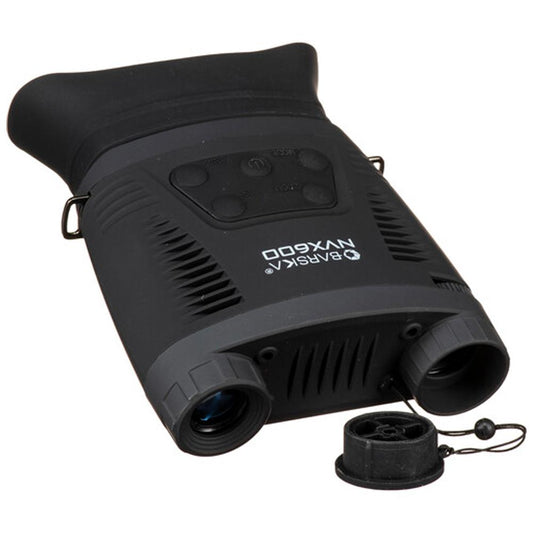

Barska Binocular Night Vision NVX600 features advanced night vision technology, enabling clear observation in complete darkness. With a 6x magnification and a 50mm objective lens, these binoculars are particularly effective for wildlife spotting and stargazing. The internal IR illumination enhances visibility, allowing users to see details that would otherwise be lost in the dark. Designed for outdoor enthusiasts, the NVX600 is compact and lightweight, making it easy to carry on hikes or camping trips.
The durable, rubber-armored body ensures these binoculars can withstand various weather conditions, while the adjustable eye relief provides comfort for extended viewing. Whether you're birdwatching at dusk or exploring the night sky, the Barska NVX600 delivers dependable performance and clarity, making every nighttime adventure enjoyable.
Key Features:
- HIGH NIGHT VISION for clear images in darkness, perfect for wildlife observation.
- COMPACT DESIGN for easy portability; take it anywhere for spontaneous adventures.
- WATER-RESISTANT BODY ensures durability in various weather conditions.
- POWERFUL MAGNIFICATION brings distant subjects closer, ideal for birdwatching.
- ADJUSTABLE EYE RELIEF for comfort during extended viewing sessions.
- STURDY GRIP prevents slipping, even in challenging environments.
- LONG BATTERY LIFE means extended use without interruptions.
- INTERNAL IR ILLUMINATION enhances visibility in total darkness, giving you a clear view.
Technical Specifications
| Feature | Details |
|---|---|
| Magnification | 6x |
| Lens Diameter | 50mm |
| Weight | 1.5 lbs |
| Dimensions | 10 x 7 x 3 inches |
| Material | Rubber armored |
What’s in the Box?
- Lens covers
- Padded carrying case
- Neck strap
- User manual
Customer Reviews
“The Barska NVX600 is amazing! I can see so clearly at night!” - Sarah M.
“Perfect for my camping trips. Highly recommend!” - Jake P.
FAQ Section
- How well does the night vision work? The NVX600 provides excellent visibility even in total darkness.
- Are these binoculars waterproof? Yes, they are designed to withstand various weather conditions.
- Can I use these during the day? Yes, they work well in daylight too!
- How do I maintain my binoculars? Keep them clean and store them in a dry place.
- How does this model compare to others? The NVX600 offers superior night vision capabilities compared to standard models.
Similar Models
Looking for more options? Discover our extensive selection of Barska binoculars, including the Barska 10x42 for versatile daytime use and the Barska 20x50 for superior long-range viewing. Explore our full collection tailored to your outdoor adventures!
You May Also Like
Here’s some of our most similar products people are buying. Click to discover trending style.






